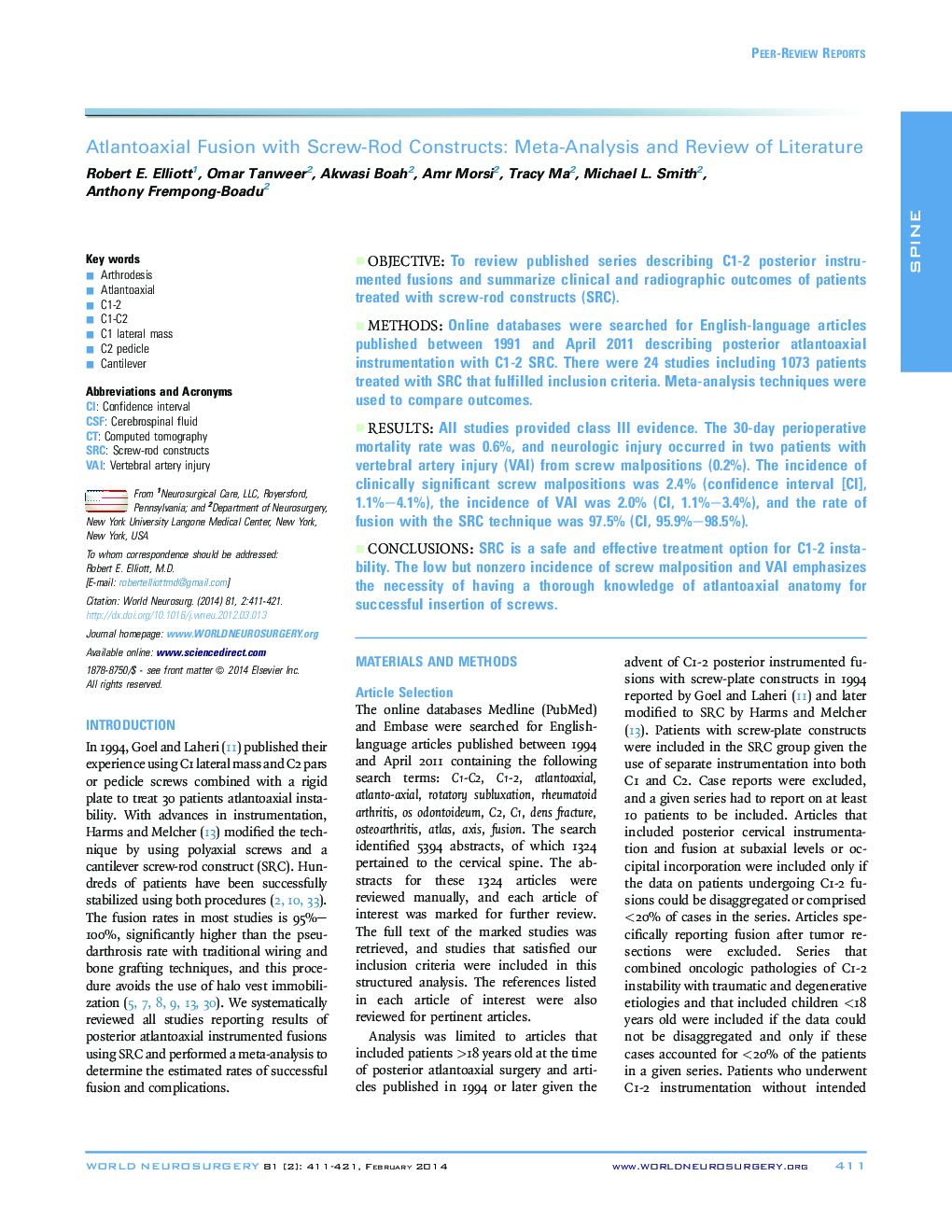| Article ID | Journal | Published Year | Pages | File Type |
|---|---|---|---|---|
| 3095734 | World Neurosurgery | 2014 | 11 Pages |
ObjectiveTo review published series describing C1-2 posterior instrumented fusions and summarize clinical and radiographic outcomes of patients treated with screw-rod constructs (SRC).MethodsOnline databases were searched for English-language articles published between 1991 and April 2011 describing posterior atlantoaxial instrumentation with C1-2 SRC. There were 24 studies including 1073 patients treated with SRC that fulfilled inclusion criteria. Meta-analysis techniques were used to compare outcomes.ResultsAll studies provided class III evidence. The 30-day perioperative mortality rate was 0.6%, and neurologic injury occurred in two patients with vertebral artery injury (VAI) from screw malpositions (0.2%). The incidence of clinically significant screw malpositions was 2.4% (confidence interval [CI], 1.1%–4.1%), the incidence of VAI was 2.0% (CI, 1.1%–3.4%), and the rate of fusion with the SRC technique was 97.5% (CI, 95.9%–98.5%).ConclusionsSRC is a safe and effective treatment option for C1-2 instability. The low but nonzero incidence of screw malposition and VAI emphasizes the necessity of having a thorough knowledge of atlantoaxial anatomy for successful insertion of screws.
